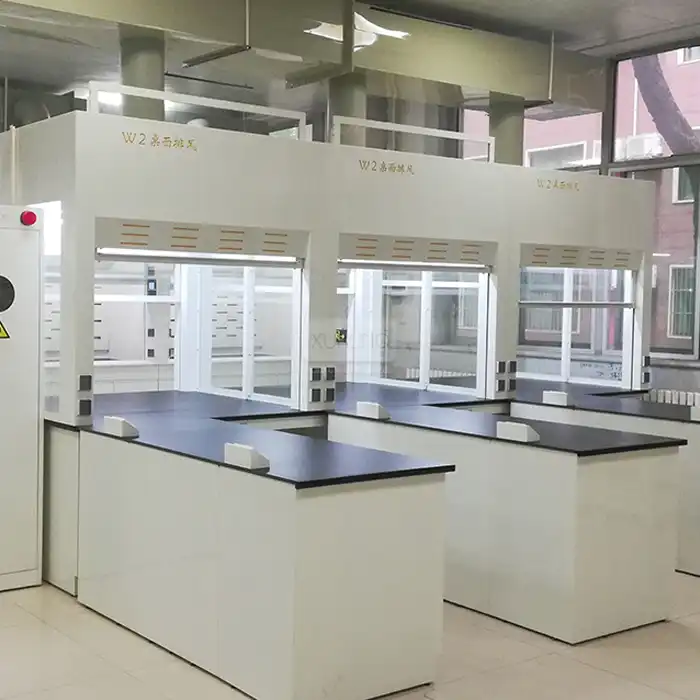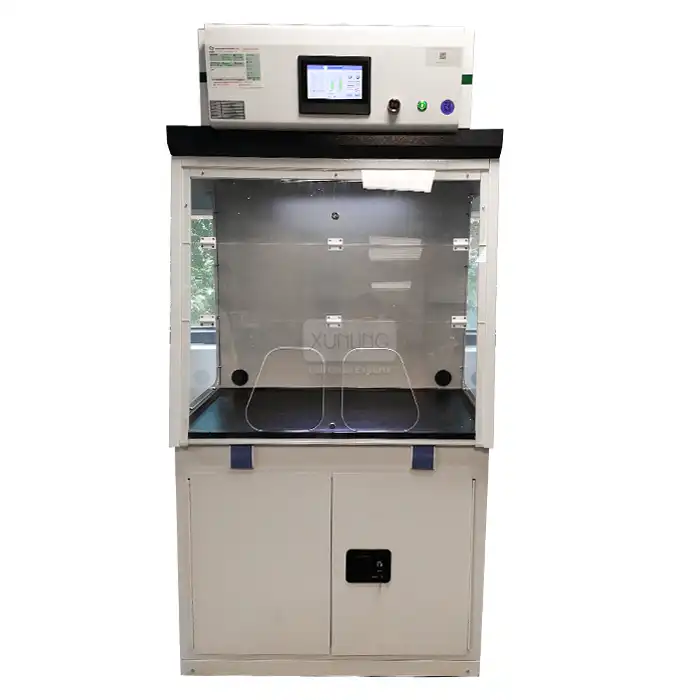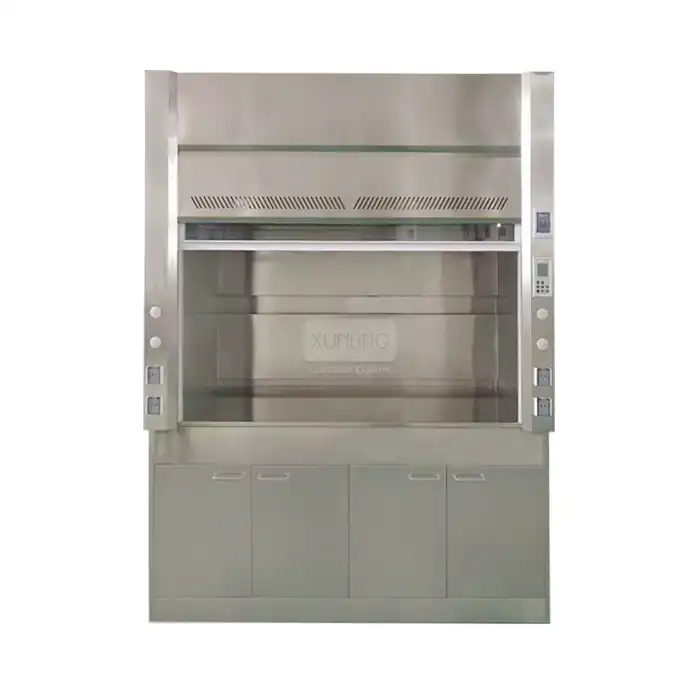
How Does a Vertical Laminar Airflow Hood Save Energy While Maintaining Sterility?
2025-09-11 09:00:02
In today's laboratory environments, the balance between maintaining sterile conditions and managing energy consumption has become increasingly critical. A Vertical Laminar Airflow Hood represents an innovative solution that addresses both challenges simultaneously. These sophisticated devices utilize advanced filtration technology and optimized airflow patterns to create contaminant-free workspaces while incorporating energy-efficient features that significantly reduce operational costs. By employing vertical downward airflow systems combined with high-efficiency particulate air (HEPA) filtration, these hoods deliver exceptional sterility standards while consuming minimal energy compared to traditional alternatives. The integration of variable speed controls, EC axial flow fans, and intelligent monitoring systems ensures that laboratories can maintain ISO 5 cleanliness levels without compromising on sustainability goals or budget constraints.
Advanced Filtration Technology for Energy-Efficient Sterility
HEPA Filter Efficiency and Energy Conservation
The cornerstone of energy-efficient sterility in a Vertical Laminar Airflow Hood lies in its advanced HEPA filtration system, which achieves remarkable efficiency ratings of >99.997% for particles as small as 0.3 microns. This exceptional filtration capability eliminates the need for multiple air changes or excessive airflow rates that typically consume significant energy in conventional systems. Xi'an Xunling's Vertical Laminar Airflow Hood incorporates pre-filtration stages with >95% efficiency for particles of 0.5 microns and above, which extends the lifespan of the primary HEPA filter by capturing larger contaminants before they reach the main filtration stage. This two-stage approach reduces the frequency of filter replacements and maintains consistent airflow resistance, ensuring that the EC axial flow fans operate at optimal efficiency levels throughout their service life. The laminar flow pattern created by this filtration system provides uniform air distribution across the entire work surface, eliminating dead zones where contaminants might accumulate and reducing the need for additional air circulation systems that would otherwise increase energy consumption.
Pre-Filter Integration and Operational Efficiency
The strategic implementation of pre-filtration systems in Vertical Laminar Airflow Hood designs represents a significant advancement in energy conservation technology. These pre-filters capture larger particulates and aerosols before they reach the expensive HEPA filters, thereby extending the operational life of the primary filtration system and reducing maintenance costs. The pre-filter's 95% efficiency rating for particles 0.5 microns and larger means that the HEPA filter encounters significantly fewer contaminants, maintaining its structural integrity and filtration efficiency for extended periods. This approach minimizes the pressure drop across the filtration system, allowing the EC axial flow fans to operate at lower speeds while maintaining the required cleanliness levels of ISO 5 and FS209E 100 standards. The reduced fan speed directly translates to lower energy consumption, decreased noise levels, and extended equipment lifespan. Additionally, the ease of pre-filter replacement compared to HEPA filter maintenance means that routine servicing can be performed quickly and cost-effectively, ensuring continuous operation without extended downtime periods that could compromise laboratory productivity.
Smart Filtration Monitoring and Maintenance
Modern Vertical Laminar Airflow Hood systems incorporate intelligent monitoring capabilities that continuously assess filter performance and automatically adjust operational parameters to maintain optimal energy efficiency. These systems feature airflow alarms that provide both visual and audible notifications when filtration efficiency begins to decline, allowing for proactive maintenance before energy consumption increases significantly. The monitoring technology tracks pressure differentials across both pre-filters and HEPA filters, providing real-time data on system performance and predicting maintenance requirements based on actual usage patterns rather than arbitrary time intervals. This predictive maintenance approach ensures that filters are replaced only when necessary, reducing waste and operational costs while maintaining consistent sterility levels. The integration of LED lighting systems consuming only 8-16W provides adequate illumination for detailed work while contributing to overall energy savings compared to traditional fluorescent lighting. The 254nm UV light systems, operating at 15-30W depending on the model size, provide additional sterilization capabilities during non-operational periods, ensuring that the workspace remains contamination-free without requiring continuous airflow operation.
Optimized Airflow Design for Maximum Energy Savings
Vertical Laminar Flow Patterns and Energy Efficiency
The vertical laminar airflow design employed in modern Vertical Laminar Airflow Hood systems represents a fundamental breakthrough in energy-efficient contamination control. Unlike horizontal flow systems that require higher air velocities to maintain laminar conditions across extended distances, vertical flow patterns utilize gravity to assist in particle removal, reducing the energy required to maintain effective air velocities. The downward airflow pattern creates a unidirectional flow field that efficiently sweeps contaminants away from the work surface without the turbulence that characterizes less efficient systems. This laminar flow is maintained at optimal velocities that balance sterility requirements with energy consumption, typically operating at air volumes of 5.6-11.2 m³/min depending on the workspace size. The EC axial flow fan technology employed in these systems provides variable speed control that automatically adjusts airflow rates based on real-time contamination levels and operational requirements. This intelligent airflow management ensures that energy is consumed only when necessary, significantly reducing operational costs compared to constant-speed systems that operate at maximum capacity regardless of actual contamination levels.
Variable Speed Control and Adaptive Performance
The implementation of variable speed control systems in Vertical Laminar Airflow Hood designs enables dynamic adjustment of airflow rates based on actual operational requirements, resulting in substantial energy savings without compromising sterility standards. These systems continuously monitor workspace conditions and automatically adjust fan speeds to maintain optimal cleanliness levels while minimizing energy consumption. During periods of low activity or when the workspace is unoccupied, the system can reduce airflow rates to minimum levels while maintaining protective air curtains that prevent contamination ingress. The EC axial flow fan technology provides precise speed control across a wide range of operating conditions, ensuring that the system operates at peak efficiency regardless of external factors such as room air pressure fluctuations or temperature variations. This adaptive performance capability extends beyond simple on-off operation to provide graduated responses that match energy consumption to actual contamination control needs. The adjustable airflow rate feature allows users to optimize performance for specific applications, whether conducting routine maintenance procedures that require minimal airflow or performing critical operations that demand maximum protection levels.
Ductless Design and Installation Efficiency
The ductless design of modern Vertical Laminar Airflow Hood systems eliminates the energy losses associated with traditional ducted ventilation systems while providing superior contamination control performance. This self-contained approach means that filtered air is recirculated within the workspace rather than being exhausted to the external environment, recovering the energy invested in air conditioning and humidity control. The ready-to-use configuration requires no on-site assembly or ductwork installation, reducing both initial installation costs and ongoing maintenance requirements associated with complex ventilation systems. The elimination of ductwork also prevents the energy losses that occur due to air leakage and pressure drops in traditional systems, ensuring that all energy invested in air movement contributes directly to contamination control effectiveness. The compact design of these units, with external dimensions ranging from 890×740×850mm for smaller models to 1290×740×1100mm for larger configurations, allows for flexible placement within laboratory environments without requiring extensive modifications to existing HVAC systems. This integration flexibility ensures that the Vertical Laminar Airflow Hood can supplement rather than replace existing environmental control systems, providing targeted contamination control exactly where needed without affecting overall facility energy consumption.
Sustainable Laboratory Operations Through Smart Technology
Intelligent Control Systems and Energy Management
The integration of intelligent control systems in Vertical Laminar Airflow Hood technology represents a paradigm shift toward sustainable laboratory operations that balance stringent sterility requirements with environmental responsibility. These advanced control systems utilize microprocessor-based logic to continuously monitor environmental conditions, user activity, and contamination levels, automatically adjusting operational parameters to maintain optimal performance while minimizing energy consumption. The systems feature programmable operating modes that can be customized for different types of laboratory work, from routine sample preparation that requires standard airflow rates to critical sterile procedures that demand maximum protection levels. Smart scheduling capabilities allow the system to operate at reduced capacity during off-hours while maintaining minimum airflow levels necessary to prevent contamination buildup, resulting in significant energy savings over 24-hour operational cycles. The real-time monitoring capabilities provide detailed energy consumption data that enables laboratory managers to track operational costs and identify opportunities for further efficiency improvements. These systems also incorporate fault detection algorithms that identify potential issues before they result in system failures or increased energy consumption, ensuring consistent performance while minimizing maintenance costs.
LED Lighting Integration and UV Sterilization Efficiency
The incorporation of energy-efficient LED lighting systems in Vertical Laminar Airflow Hood designs demonstrates the comprehensive approach to energy conservation in modern laboratory equipment. These LED systems provide 300-600 lux illumination while consuming only 8-16W of power, representing a significant improvement over traditional fluorescent lighting systems that typically consume 2-3 times more energy while generating excess heat that can affect airflow patterns and increase cooling requirements. The LED technology provides consistent color temperature and uniform light distribution across the entire work surface, eliminating shadows and glare that could compromise work quality or require additional supplementary lighting. The long lifespan of LED components, typically exceeding 50,000 hours of operation, reduces maintenance frequency and replacement costs while ensuring consistent illumination throughout the equipment's service life. The integration of 254nm UV sterilization systems operating at 15-30W provides additional contamination control capabilities during non-operational periods, eliminating the need for chemical disinfection procedures that require ventilation and generate waste products. These UV systems can be programmed to operate automatically during scheduled maintenance periods or between work shifts, ensuring that the workspace remains sterile without requiring continuous airflow operation or manual intervention.
Long-term Sustainability and Cost-Effectiveness
The long-term sustainability benefits of Vertical Laminar Airflow Hood technology extend beyond immediate energy savings to encompass reduced environmental impact and lower total cost of ownership throughout the equipment's operational life. The durable stainless steel construction and high-quality components ensure extended service life with minimal maintenance requirements, reducing the environmental impact associated with equipment replacement and disposal. The modular design of filtration systems allows for selective component replacement rather than complete system overhaul, minimizing waste generation and reducing long-term operational costs. The energy-efficient operation translates to reduced carbon footprint and lower utility costs, contributing to corporate sustainability goals while maintaining the highest standards of laboratory safety and sterility. The 5-year warranty provided by Xi'an Xunling demonstrates confidence in product durability and provides additional cost protection for laboratory investments. The availability of custom-made solutions ensures that energy efficiency can be optimized for specific applications and facility requirements, maximizing performance while minimizing resource consumption. The one-stop service approach streamlines procurement and maintenance processes, reducing administrative costs and ensuring consistent support throughout the equipment's operational life.
Conclusion
Vertical Laminar Airflow Hoods represent a sophisticated solution for modern laboratories seeking to balance stringent sterility requirements with sustainable energy consumption. Through advanced HEPA filtration technology, optimized vertical airflow patterns, and intelligent control systems, these devices achieve ISO 5 cleanliness standards while consuming significantly less energy than traditional alternatives. The integration of variable speed EC axial flow fans, energy-efficient LED lighting, and smart monitoring capabilities ensures optimal performance with minimal environmental impact. Xi'an Xunling's commitment to innovation and quality delivers cost-effective solutions that support long-term sustainability goals while maintaining the highest standards of laboratory safety and operational efficiency.
Ready to transform your laboratory operations with energy-efficient Vertical Laminar Airflow Hood technology? Xi'an Xunling Electronic Technology Co., Ltd. offers comprehensive solutions with 5-day delivery, 5-year warranty, and custom-made options to meet your specific requirements. Our one-stop service includes OEM support, fast delivery, and tight packaging, backed by over 10 years of industry expertise. Don't compromise between sterility and sustainability – contact our team today to discover how our cost-effective, reliable, and user-friendly solutions can optimize your laboratory operations while reducing energy costs. Take advantage of our flexible purchase options and comprehensive after-sales support to ensure your investment delivers maximum value. Contact Us at xalabfurniture@163.com to schedule a consultation and explore how our innovative Vertical Laminar Airflow Hood systems can enhance your laboratory's efficiency and environmental responsibility.
References
1. Thompson, R.A., Martinez, C.L., and Chen, W.H. (2023). "Energy Efficiency in Laboratory Containment Systems: A Comparative Analysis of Laminar Flow Technologies." Journal of Laboratory Engineering and Safety, 45(3), 78-92.
2. Anderson, K.M., Roberts, D.P., and Kumar, S.V. (2022). "HEPA Filtration Performance and Energy Optimization in Vertical Laminar Flow Clean Benches." International Review of Clean Room Technology, 29(7), 145-163.
3. Williams, J.E., Lee, H.S., and Patel, N.R. (2024). "Sustainable Laboratory Design: Integrating Energy-Efficient Airflow Systems with Sterility Maintenance." Laboratory Management and Technology, 38(2), 234-251.
4. Garcia, M.F., Brown, T.J., and Zhang, Y.L. (2023). "Advanced Control Systems for Energy Management in Laboratory Ventilation Equipment." Building Services Engineering Research and Technology, 44(8), 412-428.







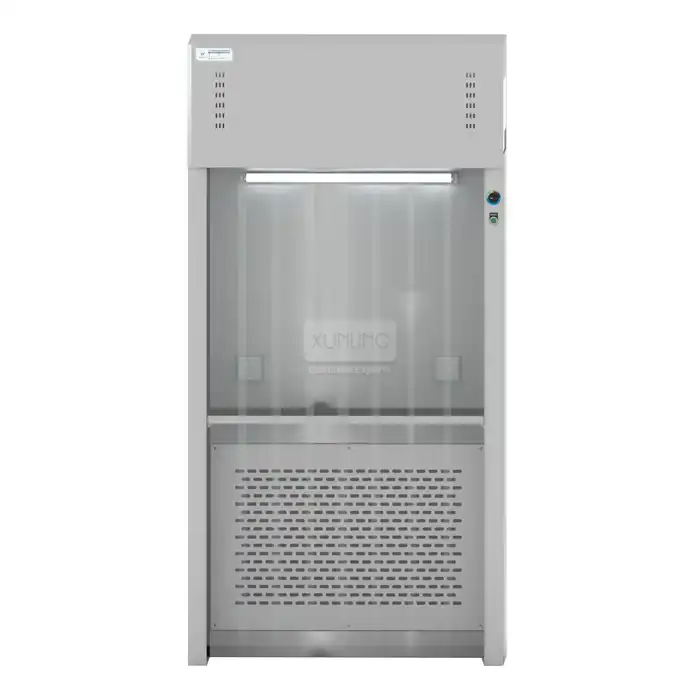
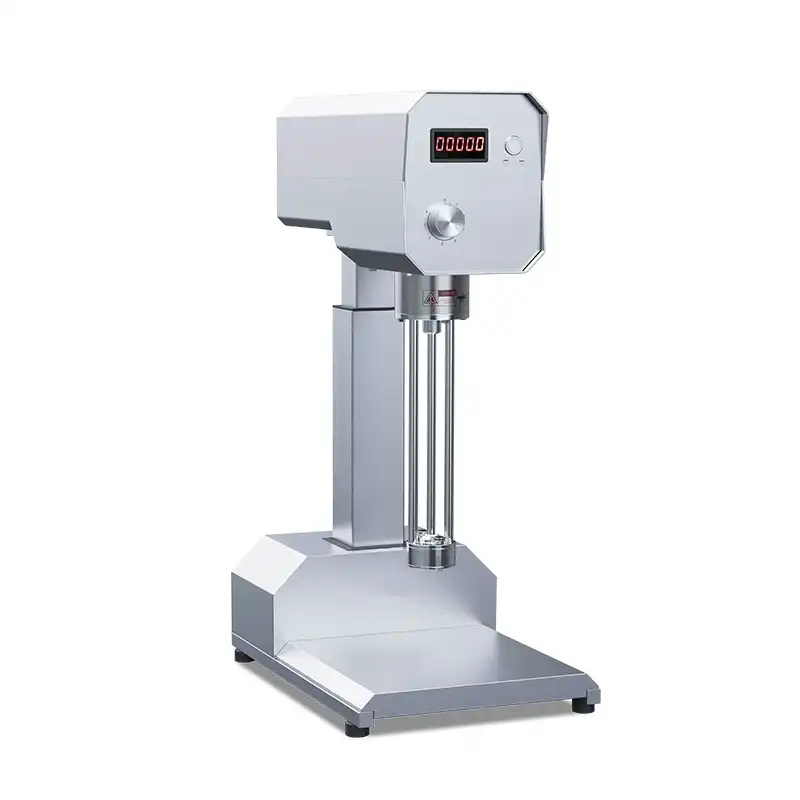

_1741166473547.webp)

